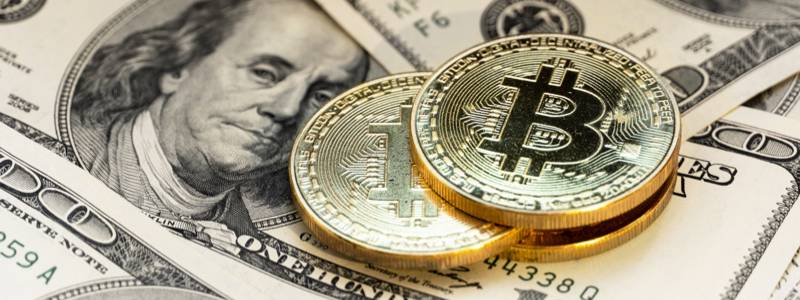CHINA SECURITIES JOURNAL SOUNDS ALARM ON CRYPTOCURRENCY FINANCIAL RISKS
On Sunday, May 16th, as per an opinion piece in the China Securities Journal (CS), a broader consensus on strengthening supervision of Bitcoin and crypto transactions is currently being undertaken. This comes through several commissions – The China Securities Regulatory Commission, China Insurance Regulatory Commission, and The China Banking Regulatory Commission, and the process will entail information disclosure, policy interpretation, and market analysis of publicly available financial instruments. China has been issuing regular advisories and creating policies to deter the use of crypto for years even as the country is preparing to launch its very own digital currency, controlled by the central bank. In part, the report stated that “Bitcoin-related transactions are facing increasingly stringent scrutiny and supervision around the world. At present, the regulatory authorities of many countries have either explicitly banned transactions or issued policies to restrict them.” China’s biggest banks are already deploying blockchain-based financial applications, and its own digital currency, the Digital Currency Electronic Payment (DCEP), once issued, will provide absolutely no anonymity for the user, and so this will afford the Chinese government a brand-new means of monitoring its economy and its people. A ban on bank and payment institution dealings in Bitcoin has been in place since 2013, when the Chinese central bank, together with four of its ministries, jointly released a public statement entitled, “Notice on Preventing Bitcoin Risks.” With that action, Chinese financial authorities claimed to be protecting the property rights of the public while safeguarding the yuan, preventing money laundering, and ensuring the country’s financial stability.
UNDERSTANDING POLKASTARTER, AND ALL THE HYPE SURROUNDING THIS LATEST FUNDRAISING CRAZE IN CRYPTO

You have probably heard of Polkastarter (POLS), the finance project that provides users with a decentralized launchpad for crowdfunding. What makes Polkastarter different from other ICO or IDO platforms? Why do projects launched on this platform show 20x+ returns even with relatively small volumes? IDOs, or Initial Decentralized Offerings, provide participants and projects with a cheap, welcoming, and straightforward path to capital growth. Polkastarter is the leading IDO platform, offering their community access to the best early-stage crypto projects. But the IDO space suffers one major problem in the form of congestion. Since anyone can launch a token, it is difficult for the broader crypto community to consistently identify and invest in quality, high-potential projects. Polkastarter addresses this problem through a highly effective due diligence process before they onboard any project. Being part of Polkastarter’s launchpad adds a great degree of credibility to the project – the crypto community highly values the Polkastarter team for their research and due diligence. Simply put, Polkastarter is an IDO platform which is very successful at connecting early-stage projects with eager community members. Through fixed pool swaps, projects that raise through Polkastarter distribute tokens to these early community members in exchange for capital. The goal of the platform is to provide an all-in-one solution for all blockchain and DEX needs a project might have, which is crucial since decentralized exchanges (DEX) have quickly grown in user base and volume. An important side note is that crowdfunding on Polkastarter is not limited only to ERC-20 tokens on Ethereum, it can be also done using BEP-20 tokens on Binance Smart chain.
Fixed ratio swaps are Polkastarter’s answer to the rampant problems of blockchain crowdfunding. Aside from preventing the typical volatility of the tokens being sold, they provide better transparency both to users and investors. Fixed swaps enable projects to set a cap on how much an individual can invest. This prevents short-term speculators from pumping and dumping the token being sold while also providing investors with the assurance that their purchase won’t suddenly and aggressively lose its value. To purchase tokens during a Polkastarter IDO, users must participate through a POLS pool, and only individuals whose addresses have been whitelisted are enabled to do so. Your chances of being whitelisted are directly proportional to the number of POLS you own. Auctions may be the engine that give Polkastarter its velocity, but the POLS token is the fuel that powers the engine. POLS are available on Ethereum and BSC as ERC/BEP20. POLS token holders are also eligible to participate in the fundraising of the projects which are open only to POLS holders. The first several projects that launched on Polkastarter all shared the same basic idea—offering an innovative service while solving the problem of current blockchain frameworks. MahaDAO, SpiderDAO, Royale Finance, and FIRE Protocol were among the first ones to utilize Polkastarter’s framework to fund their visions of what the DeFi market should look like. Most of these protocols quickly caught fire and provided their investors with an incredible return on investment (ROI). Always looking for the next big thing, the rest of the crypto market quickly realized the potential that lies in Polkastarter IDOs, rushing in to invest in young projects looking to change the face of DeFi and other verticals. This had an avalanche effect, pushing dozens of new projects to swarm Polkastarter and fight for a portion of the funds that were being poured into the platform. Set to add new features to its auction platform and additional functionality to the POLS token in the near future, Polkastarter is well on its way to change the way DeFi projects raise capital.
SHORT TERM BITCOIN HOLDERS’ ‘PANIC SELLING’ DRIVES CRYPTO DOWNTURN

Data from the analytics tool IntoTheBlock showed that the number of addresses holding Bitcoin for more than one year has increased to its highest-ever level. In a tweet, they stated that, “The recent Bitcoin selloff seems to come from short-term holders selling at a loss, as the number of addresses holding #Bitcoin for more than 1 year continues to increase and is at a high in May.” This would suggest that the market downturn was being driven mainly by short-term holders who are panic selling to exit their position.
The latest price drop puts Bitcoin at the precipice of a new ‘crypto winter.’ Over the last seven days, the total crypto market cap has fallen near 30% from $2.5 trillion to $1.8 trillion, and the leading cryptocurrency is down 40% from its recent all-time high of $64k, just four weeks ago. Since then, multiple breaks of key support levels have provoked talk of a return to the bear market as analysts noted that Bitcoin is interacting with its 200-day moving average. A daily close below this level would be a bearish sign and possibly the start of a new crypto winter. One analyst wrote that, “The Fear versus Greed Index is currently at fear levels. At the same time, Bitcoin is flowing further down as it is not filling big orders. Most volume is from retail activity. Our last Order Book analysis is still valid, so our recommendation is to stay strong until that structure is broken. However, if this bear run continues, we may face a crypto winter.” In trying to explain the market downturn, the host of The Breakdown Podcast, Nathaniel Whittemore, pointed out there might be a wider scheme to discredit cryptocurrency. Perhaps the biggest of these stories is the news that Chinese authorities have renewed their calls to ban Bitcoin. It has been reported that three government bodies have called on institutions not to conduct business with crypto companies and have warned that the law does not protect cryptocurrency transactions. Regardless of the precise cause, the FUD events (An acronym that stands for “Fear, Uncertainty and Doubt.” It is a strategy to influence perception of certain cryptocurrencies or the cryptocurrency market in general by spreading negative, misleading, or false information) of the past couple of days bring home the precarious nature of investing in cryptocurrency.
BITCOIN VS. ALL OTHER FINANCIAL ASSETS, ACCORDING TO TONE VAYS

Tone Vays is perhaps one of the most well-known institutional traders-turned-crypto geeks who has been making public calls on Bitcoin for years. As do many traders who view market metrics by relying on a mix of the staunchest fundamental and technical analysis, Vays’s calls have gained him a great following since he has been right on many, long-term directional calls. With vast experience from Wall Street, his expertise is in Economic Trends, Trading, and Risk Analysis, and he has been a Bitcoin bull since 2013. On Cryptonites recently, Vays was asked about everyone’s favorite topic—where Bitcoin is going in the next year, how Tesla affects Bitcoin perception, and how the asset ranked against all other financial assets. Here’s a snippet from his commentary: Regarding Bitcoin versus the dollar. “Bitcoin doesn’t have to go very far to win round one, because just in the last 12 months, the US government alone printed 20% of all the currency in existence than has ever existed. And the US government was one of the more responsible countries printing their money, Canada, what, like 40%, or something insane,” he explained, adding: “and even throughout all that, the US dollar is still dropping versus other currencies like the Euro, which has always been stunning.” Vays added his personal trust in the US dollar was “shaken” after the elections went the other way. “When the election was fraudulently stolen from Donald Trump, and handed to Joe Biden, that’s when I lost all respect and all confidence in the US political system,” he said. Makes you wonder, does this mean that Democracy is officially dead (or has it always been)? Vays added, “I can no longer trust the US economic system. And that means the US dollar days are numbered. That is what caused it. Because this showed that the elites don’t care what the people want, they will do whatever the hell they want.”
Pertaining to BTC vs. CBDC: This round, said Vays, is the ‘exact same story’ as fiat currencies. CBDCs, short for central bank digital currencies, are proposed digital currencies issued by central governments around the world that are backed by the existing fiat reserves. Some like China are already in the advanced stages of testing their CBDCs, while others like France, Korea, and Japan are said to be planning out pilots in the near future. Vays, however, doesn’t consider these a big contender. “I’ve always played down the hype of central banks, and their digital coins and tokens if they already have them. The dollar is a central bank digital coin. The only thing that’s stopping it from being 100% Digital is that there are $100 bills in your pocket,” he noted, adding: “in Europe, there are many countries that barely have any paper money. Pretty soon several countries in Europe will not have any paper money. It’s very difficult for the United States to go fully digital, because these dollars are used all around the world. But for any other country with good technology, good internet – they don’t need paper money anymore. And that’s a dream for central banks,” Vays stated. As for GOLD: “I feel really sorry for the gold bulls that still refuse to admit that Bitcoin is a better version of gold. Because gold just doesn’t have the biggest, most important properties that Bitcoin does.” His belief that bitcoin was much easier to carry around than pounds of gold remains his truest argument as to why bitcoin will edge out gold as a flexible asset. “Bitcoin is the first unconfiscatable (sic) asset that humans have ever owned. And it is still beyond most people’s understanding how powerful that is,” he added.
Check out the rest of Vays’ thoughts on Bitcoin vs. Gold and other financial assets in the Cryptonites Dubai Edition episode, available for streaming at: kelscrypto.com.
INSTITUTIONAL INVESTORS BOUGHT MORE ETHEREUM THAN BITCOIN LAST MONTH

For the first time ever, institutional Ethereum (ETH) inflows outperformed inflows into Bitcoin (BTC). Bitcoin (BTC) witnessed the largest on record outflow last week, according to the London-based digital asset manager CoinShares. CoinShares is the second-largest European digital asset manager, and in their report, Bitcoin investment products recorded a colossal $98 million in outflows. The report went on to say, “The outflows were solely from Bitcoin investment products which totaled $98 million or 0.2% of total assets under management. While small, this marks the largest outflow we have recorded, with the second largest at $19 million in May 2019.” Before crypto prices plummeted last week, BTC investment products had major outflows. Meanwhile, the second largest cryptocurrency, Ethereum (ETH), experienced ample institutional investment inflows. Compared to BTC’s $3.1 billion worth of inflows, ETH trading volumes in digital asset investment products totaled $4.1 billion. Only BTC investment products documented outflows while ETH and other altcoins saw sizable inflows last week. Altcoin investment products overall totaled $48 million in inflows, suggesting “that investors have been diversifying out of BTC and into altcoin investment products.” Following on the heels of ETH, which saw $27 million worth of inflows last week, Cardano (ADA) recorded $6 million and Polkadot (DOT) $3.3 million. After hitting an all-time high just under $65,000 in mid-April, the price of BTC fell sharply by a staggering 35 percent, as investors diversified their cryptocurrency assets with new developments in their networks such as ETH. Even though crypto asset investment products registered a major outflow of $50 million, the first since October last year and the largest since May 2019, these metrics are unlikely to impact the general attitude surrounding digital assets. The report by CoinShares finished, “Historical data implies that outflows of this nature have not marked pivotal points in sentiment change for digital assets.”
BITCOIN IS ‘POTENTIALLY A BETTER STORE OF VALUE’ THAN THE DOLLAR

Singapore’s largest, and one of the world’s biggest banks by assets under management, DBS, put forward a bullish case for Bitcoin in a client note earlier this week. The bank said allocating funds to Bitcoin was an “opportunity that [fiat] money cannot buy,” adding that such investments remained a highly risky endeavor and the prospect of losing all their funds was “well within the realm of possible outcomes.”
In the note titled “demystifying cryptocurrency,” chief investment officer Hou Wey Fook said that central banks provided the “rocket fuel” for the eventual growth of cryptocurrencies due to incessant money printing in recent times that further helped popularize Bitcoin among the masses. Currency debasement and the prospects of a bleak economic outlook are narratives similar to those voiced by several technological and investment firms and billionaires in the past year such as electric carmaker Tesla, business analytics firm MicroStrategy, photo-editing app Meitu, and legendary trader Paul Tudor Jones. Each of these entities have turned to invest part of their treasury reserves into Bitcoin in the past year, with Tesla and MicroStrategy leading that list. As for the various factors of why Bitcoin was better than fiat currencies, DBS said the asset’s decentralization provided ‘power to the people’ and its limited supply helped anchor it as an ‘effective store of value.’ He added, “Bitcoin circumvents this conundrum as executive decisions are made by the entire body of users of the payment system, reducing the ability of any one group to discretionarily change the rules of the game.”
Meanwhile, Fook stated several negatives—such as slow transaction speeds and high price volatility—which continued to plague Bitcoin, alongside the broader concern of the entire crypto market existing in a regulatory gray area. Finally, Fook noted the meteoric rise in Bitcoin prices was rivaled by the balance sheets of the largest global central banks around the world, including the People’s Bank of China (PBOC). “Such trends would unequivocally drive demand for alternative currencies, even unorthodox digital forms that would potentially represent a store of value more faithfully than physical dollars would,” he wrote.
The post Digital Asset Insights #17 appeared first on JP Fund Services.
Tradersdna is a leading digital and social media platform for traders and investors. Tradersdna offers premiere resources for trading and investing education, digital resources for personal finance, market analysis and free trading guides. More about TradersDNA Features: What Does It Take to Become an Aggressive Trader? | Everything You Need to Know About White Label Trading Software | Advantages of Automated Forex Trading




































